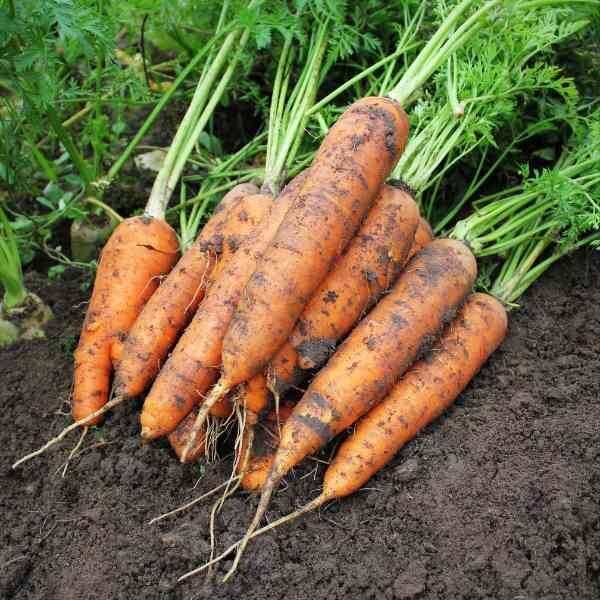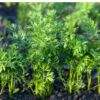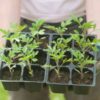Carrot Royal Chartenay
$4.49
Daucus Carota
- Seed Count 700
- Traditional Carrot
- Annual
In stock
Description
As the name suggests, the Carrot Royal Chantenay originated from the Chantenay region of France.
It is a well known, small, sweet variety of carrot with orange-red flesh and a fine crisp texture. They taste ‘as carrots used to taste’.
An all purpose variety with broad shoulders and a blunt tip. Perfect for container growing and very adaptable to a variety of soils, they are excellent for both early and succession sowing.
Chantenay carrots are extremely versatile. Simply wash in cold water and they’re ready to eat or cook. Delicious in salads they can be baked, steamed, or used in stir-frys.
They are particularly popular with children because of their sweet crunchiness and small size, one carrot is perfectly designed to fit snugly into the hand of a small child!
| Method: Sow direct | Soil Temp: 8°C - 30°C |
| Cool Mountain: Sep - Feb | Position: Full sun |
| Arid: Jan - Dec | Row Spacing: 10cm apart |
| Temperate: Sep - May | Planting Depth: 3mm |
| Sub Tropical: Feb - May | Harvest: 60 days |
| Tropical: Apr - Jun | Plant Height: 13cm |
Ideal Growing Conditions
Climate:
- Carrots prefer moderate temperatures and grow best between 15°C to 20°C
- They tolerate light frost but may become bitter if exposed to extreme cold.
Soil:
- Well-draining soil is crucial. Sandy loam is the best, as it allows for free root expansion.
- Avoid heavy clay soils, which can cause deformities in the roots.
- Prep the soil by removing stones, weeds, and debris to a depth of at least 30 cm.
pH:
- The ideal pH range is between 6.0 and 6.8.
- If your soil is too acidic or alkaline, consider adding lime or sulphur to adjust the pH.
Planting Carrots
Timing:
- In most parts of Australia, carrots can be sown from late summer through to spring.
- Consider the local climate; in milder regions, sowing can be done all year round.
Seed Preparation:
- Carrot seeds are small. Mixing them with sand can help distribute them evenly when planting.
Sowing:
- Sow seeds directly into the garden bed. Plant 3 mm deep, and lightly cover with soil.
- Space seeds about 10 cm apart within rows that are 10 cm apart.
Covering:
- Lightly mulch after planting to retain moisture and suppress weeds.
Watering and Care
Watering:
- Keep the soil consistently moist, especially during germination (around 2-3 weeks).
- Watering deeply but infrequently encourages deeper root growth. During dry spells, consider watering every few days.
Thinning:
- Once seedlings are about 10 cm tall, thin them so that they are spaced about 10 cm apart. This prevents crowding and ensures larger root development.
Fertilising:
- Use a balanced fertiliser or one low in nitrogen to avoid excessive foliage and focus on root growth.
- A side-dressing of compost along the rows can provide additional nutrients.
Weed Control:
- Keep the area weed-free to minimize competition for nutrients and water. Hand-pull weeds carefully to avoid disturbing carrot roots.
Companion Planting with Carrots
Onions and Garlic:
- These plants help repel carrot flies, one of the primary pests affecting carrots. The strong scent can confuse the flies and deter them from laying eggs near carrots.
Leeks:
- Like onions and garlic, leeks can help ward off pests while also making efficient use of garden space.
Tomatoes:
- Tomatoes can benefit carrots by providing shade, especially in warmer weather. They also help repel certain pests.
Lettuce:
- Lettuce grows quickly, allowing for effective space use. It can provide some shade for young carrots, helping to maintain soil moisture.
Radishes:
- Fast-growing radishes can be interplanted with carrots. The radishes will mature quickly, and as they are harvested, the carrots will have more space to grow.
Beans:
- Planting legumes like bush beans can fix nitrogen in the soil, which can benefit carrots. However, ensure they do not overshadow the carrots.
Marigolds:
- These flowers are excellent companions as they deter various pests, including nematodes. Their flowering can also attract beneficial insects to the garden.
Plants to Avoid
Dill:
- While this herb is fine to grow, avoid planting it too close to carrots, as they can compete for nutrients and may attract certain pests.
Celery:
- Like dill, it can compete for nutrients and may not be beneficial to neighbouring carrots.
Fennel:
- Fennel is known to be allelopathic, meaning it can inhibit the growth of surrounding plants, including carrots.
Planting Arrangement Tips
Intercropping:
- Use intercropping techniques to maximize garden space and productivity. For example, plant fast-growing radishes in between rows of slower-growing carrots.
Row Planning:
- Alternate rows of carrots with their companion plants. For example, you might plant a row of carrots followed by a row of onions or marigolds.
Vertical Space:
- Consider using vertical space efficiently. Taller plants (like tomatoes) can be placed on the northern side of carrots to minimize shading.
Pest and Disease Management
Common Pests:
- Carrot fly: Use floating row covers to prevent female flies from laying eggs at the soil surface.
- Aphids: Regular inspections can help. Use insecticidal soap if numbers are high.
Diseases:
- Fungal diseases: Ensure adequate spacing and airflow around plants. Crop rotation can also help reduce disease risk.
Harvesting
Indicators:
- Carrots are typically ready to harvest 60 days after sowing. Feel the tops to judge size. Ideally, they should be about 2.5 cm in diameter.
- Harvest them early for baby carrots or leave them to reach full size.
Harvesting Method:
- Loosen the soil around the carrot with a fork before pulling them out to avoid breaking the roots.
- Gather during dry weather for easier handling.
Storage
Short-Term:
- Store unwashed carrots in the fridge in perforated plastic bags. This maintains moisture and crispness.
Long-Term:
- For long-term storage, they can be kept in wooden boxes filled with sand in a cool, dark place.
Additional Tips
Succession Planting:
- For continuous harvests, practice sowing seeds every 2–3 weeks.













Haven’t planted yet